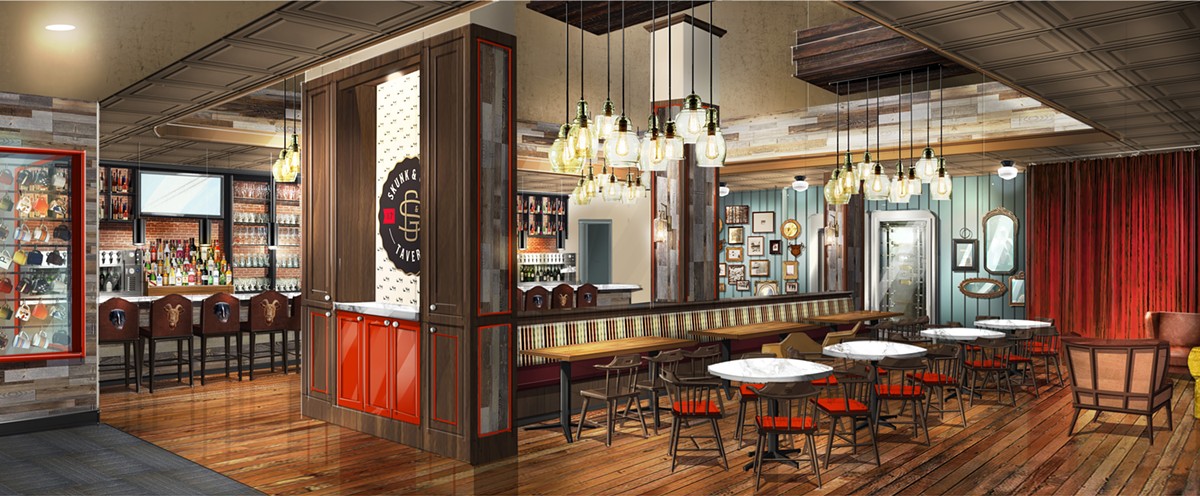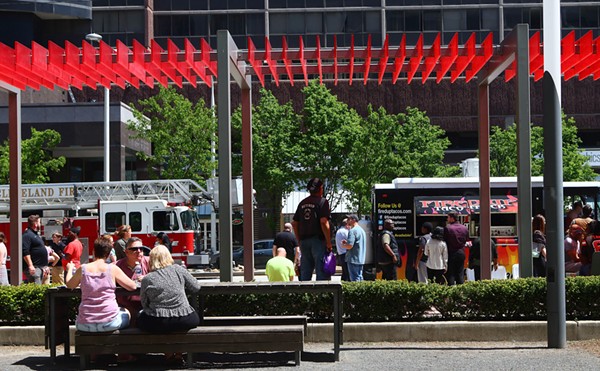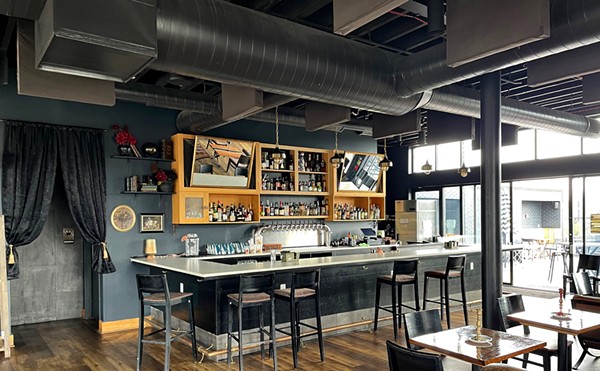"If you look at all the different restaurant projects we've done, they will all look different," says Scott Richardson, founder and chief creative officer of Cleveland-based Richardson Design. "They are all appropriate to the brand or food type or chef or location."
Hospitality guru Danny Meyer famously said that "every restaurant needs to have a point of view," and that point of view should be distinctive enough to tell a story, speak to the brand, and leave a positive lasting impression. That's where firms like Richardson step in to help turn a client's vision into reality.
"It's really about getting into the experience you want to create through interior design and sensory elements like lighting and sound," says Richardson. "For Mabel's, we crafted an entire story with Michael and Liz, around creating a new barbecue lexicon based around Cleveland ethnicity. There are elements in there that you may not even pick up on as a guest, but as an entirety it speaks to the nostalgia of barbecue in Cleveland."
Visual cues like a barrel-vaulted ceiling that evokes the West Side Market, a bar wrapped in the same green enamel you'd find on an old Coleman cooler at a Browns tailgate, and communal tables that conjure the convivial spirit of a backyard barbecue combine to create a one-of-a-kind, yet oddly familiar, dining experience.
The folks at Cleveland-based Vocon approach restaurant design in much the same fashion, one that begins with lengthy discussions to extract a client's motivations, aspirations and objectives.
"Typically, we start with the client's vision," explains Jason Burick, senior project designer. "How do they plan to differentiate themselves from the rest of the crowd, because today that is the absolute biggest challenge that any restaurant has to address."
Thanks to countless design blogs and virtual bulletin boards, it's easier than ever to create a mood board flooded with potential. But moving from concept to completion is where the real work happens.
"Anybody can go on Pinterest and grab four million images and say, 'This is what we want to be,'" Burick says. "But how will that manifest itself in terms of the physical constraints of the site, the equipment, the furniture? Getting the concept down is the first step, but the next 100 steps to when they open the door is where the meat of our work lies."
These days, restaurants come in all shapes, sizes and service styles, from multi-tenant food halls to full-service, fine-dining eateries. Each one presents the designer with a unique set of challenges to deliver on a client's goal of telling his or her story. That's precisely what Richardson was facing when he was hired to rebrand the iconic Toledo restaurant Tony Packo's into a fast-casual concept.
"We had to evolve the brand from this 60-year-old grandma and grandpa's Hungarian place to more of a fast-casual, millennial-type place," he explains. "There's a lot of great nostalgia around that brand, but we needed to repackage the story for a new generation."
Guests waiting in line can quickly survey a selection of the restaurant's famous autographed hot dog buns that bear the names of actors, musicians and U.S. presidents. Old photos and memorabilia speak to the restaurant's Eastern European heritage. Even the name has been truncated to just "Packo's" to announce a change in personality.
"In full-service places you can share a lot more of the story on the menu or through a server," notes Richardson. "At fast-casual places like this, you have to be big and bold and quick."
When it comes to sound and lighting, every diner seems to have a unique threshold for comfort. But to a designer, the goal is to create an environment where the topics don't even come up at the dinner table.
"For the most part, you don't even want to know that there is lighting," asserts Burick. "It's got to be bright enough to see your food and read a menu, but darker is better when trying to create an ambiance."
Lighting should be used strategically to "create features and focal points" around elements such as the bar, a chef's table, artwork or architectural details. And when it comes to those restaurants that seem louder than a Motorhead concert, Burick says that you should blame the budget not the designer.
"The reality is, to create an acoustical model there's a lot of work that needs to be done prior to construction, and few clients are willing to hire an acoustical consultant, which is a large chunk of money."
Given the considerable expense of designing and building a new restaurant, a person might assume that the objective would be to create a timeless jewel that has an indefinite shelf life.
"I never start off thinking that a restaurant needs to be timeless, because 99 percent of the time they aren't," Burick says curtly. And if the restaurant does manage to live long and prosper? "I would expect a restaurant to want to reinvent itself after 10 years, if not wholly then at least partially to recreate its identity to some degree."










